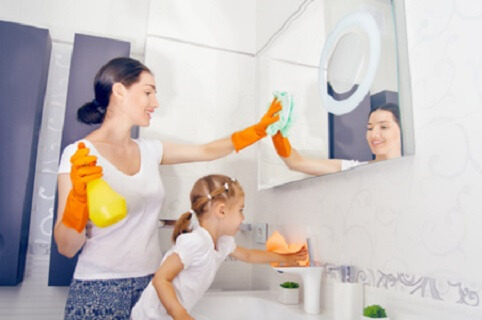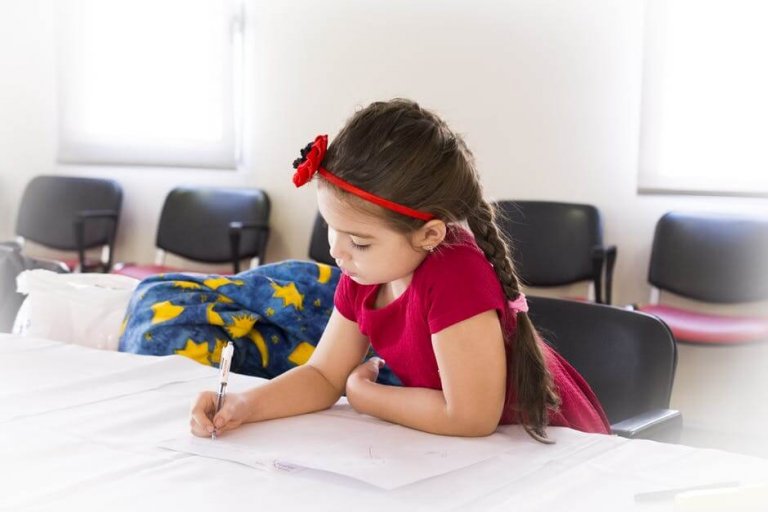Tips from Montessori for Getting Kids to Help around the House

Below you’ll find tips from Montessori on raising independent children who help out around the house. Above all, these teachings are based on care, love and respect.
Maria Montessori was a distinguished Italian educator, scientist and philosopher. Her pedagogical methods, considered radical at the time, focused on respecting children and developing their confidence in their own abilities.
Thanks to her work, we now recognize that children absorb everything they see, feel and hear.
According to the Montessori philosophy, the key to learning is motivation. Knowledge should be discovered and developed, not drummed in.
The child should learn to love and respect their environment. Sadly, Montessori’s innovative thinking was harshly criticized during her lifetime.
Today, however, many educational establishments have adopted Montessori’s teachings. There are schools that bear her name and base their curriculum on her methods.
But the influence of Montessori isn’t limited to the education system: increasingly, parents are using tips from Montessori to teach children to be self-sufficient at home.

Children’s behavior is the result of parents’ actions. If parents judge, then children will too.
If mom and dad tease and poke fun, their kids will grow up insecure. But if we teach children to be fair, then most of them will be.
The same is true of our daily chores. If children participate actively in tasks at home, they’ll soon learn to be self-sufficient.
The different stages of childhood have advantages and disadvantages, but every child has something to offer. What they don’t learn now, they’ll pick up later.
Tips from Montessori for children aged 2 to 12
2-3 years of age
At this stage, the child is still too young to do most household chores.
They can start with simple steps, such as helping set the table, learning to pour water into glasses or even sweeping up small areas with a dustpan and brush.
You could also teach your child to clear their plate and clean up crumbs after meals.
4-5 years of age
Now you can teach your child to carry out specific tasks, such as setting the table for dinner or clearing away dirty plates.
This is also a great time to learn how a vacuum cleaner works, and how to go grocery shopping. The same goes for making beds, watering plants and feeding pets.
Help me do it by myself
–Maria Montessori–
6-7 years of age
This is the perfect time to teach your child to prepare simple meals and snacks. Sweeping and unloading the dishwasher are other tasks they’re ready to try.
Your son or daughter will also be able to carefully peel carrots and potatoes, weed the garden, and pair and put away clean socks.
8-9 years of age
At this stage, your child is able to clean up after themselves without any trouble. They may be able to learn to make coffee or juice, or to take out the trash and clean small tricky areas such as the refrigerator.
It’s also a good moment to learn how to load the dishwasher. If your family has a pet, your child will be able to take care of it.
10-11 years of age
This is the time to teach basic cooking and menu planning. Learning to cut the grass and to sew are other tasks that your child is ready to take on.
Picking up the mail and vacuuming are other things they’ll be able to learn.
12 years and up
By this stage of childhood, your son or daughter will be able to take on more complex chores. At this age, children are perfectly able to wash the car, prepare easy meals and clean glassware.
They can also help paint a room, and should learn to iron and change lightbulbs. Of course, this is also the perfect time to learn to care for younger brothers and sisters.

At their core, these tips from Montessori focus on one thing: respecting children. Let them make mistakes, and don’t nag them when this happens. After all, this is the best way to learn.
Speak to your son or daughter politely, encourage them to meet their goals, and never make fun of them.
Listen to their ideas and problems, and always be patient. If you treat your child with love, care and respect, they’ll develop character and grow up strong.
Treat your child kindly and build self-confidence that will keep them from giving up when things go wrong.
They’ll become independent and know how to live without you. But they’ll always admire you for being the person who never lost faith in their abilities.
All cited sources were thoroughly reviewed by our team to ensure their quality, reliability, currency, and validity. The bibliography of this article was considered reliable and of academic or scientific accuracy.
- Campos, O., & Claudia, R. (2003). Método Montessori. Psicopedagogía II Semestre.
- Febres-Cordero Intriago, I. M. (2014). La importancia de promover la autonomía en niños de cero a cinco años(Bachelor’s thesis, Quito, 2014). http://repositorio.usfq.edu.ec/handle/23000/3152
- Hainstock, E. (2013). Teaching Montessori in the home: The Pre-School years.Toronto: Random House.
- Montessori, M. (2013). Metode Montessori. Jogjakarta: Pustaka Pelajar.
- Pitamic, M. (2004). Teach me to do it myself: Montessori activities for you and your child. New York: Barron ́s Educational Series, Inc.
- Seldin, T. & Epstein, P. (2003). The Montessori way. Florida: Todd Allen Printing Co.Inc.
- Valdebenito, P. E., Profesora, V., Claudia, I. :, Bocaz, S., Campos, R., Ramo, O., & Loyola, : (2003). METODO MARIA MONTESSORI. Instituto Profesional Luis Galdames.
This text is provided for informational purposes only and does not replace consultation with a professional. If in doubt, consult your specialist.








